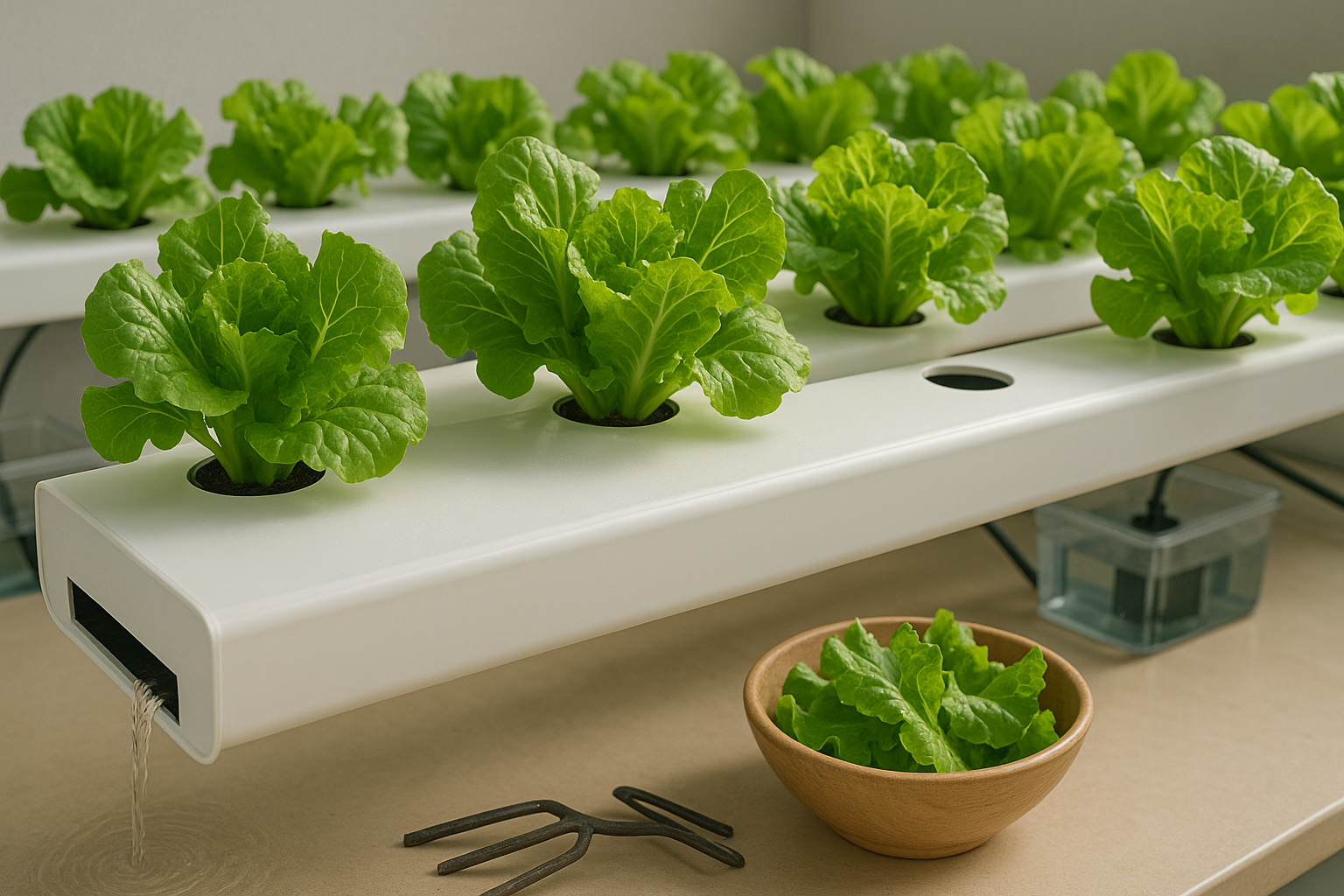Introduction to Nutrient Film Technique (NFT) for Lettuce
NFT lettuce isn’t just a buzzword in modern agriculture—it’s a game-changer for anyone serious about producing crisp, healthy greens year-round. The Nutrient Film Technique (NFT) is a hydroponic system where a thin stream of nutrient-rich water flows over the roots of lettuce plants, delivering everything they need without using soil. Gardeners and commercial growers alike are turning to NFT lettuce because it maximizes efficiency, conserves resources like water and fertilizer, and helps lettuce reach harvest size much faster than traditional soil methods. Imagine enjoying homegrown lettuce just three to four weeks after planting—all while using far less space and lowering your environmental footprint.
If you’re a hobbyist wanting fresher salads or a small business seeking a sustainable edge, mastering NFT could be your next step. In this guide, you’ll discover exactly how the Nutrient Film Technique works, what equipment you need to get started, and why it’s uniquely suited to lettuce production. We’ll break down step-by-step instructions for setting up your own NFT lettuce system, maintaining optimum nutrient flow, and troubleshooting common issues like root rot or nutrient deficiencies. Plus, you’ll get insider tips for increasing yields and improving lettuce quality, even if you’re short on space or new to hydroponics. Whether you’re curious about innovative gardening or looking for a scalable way to grow lettuce efficiently, this post will give you all the tools you need to succeed with NFT lettuce.
How NFT Works
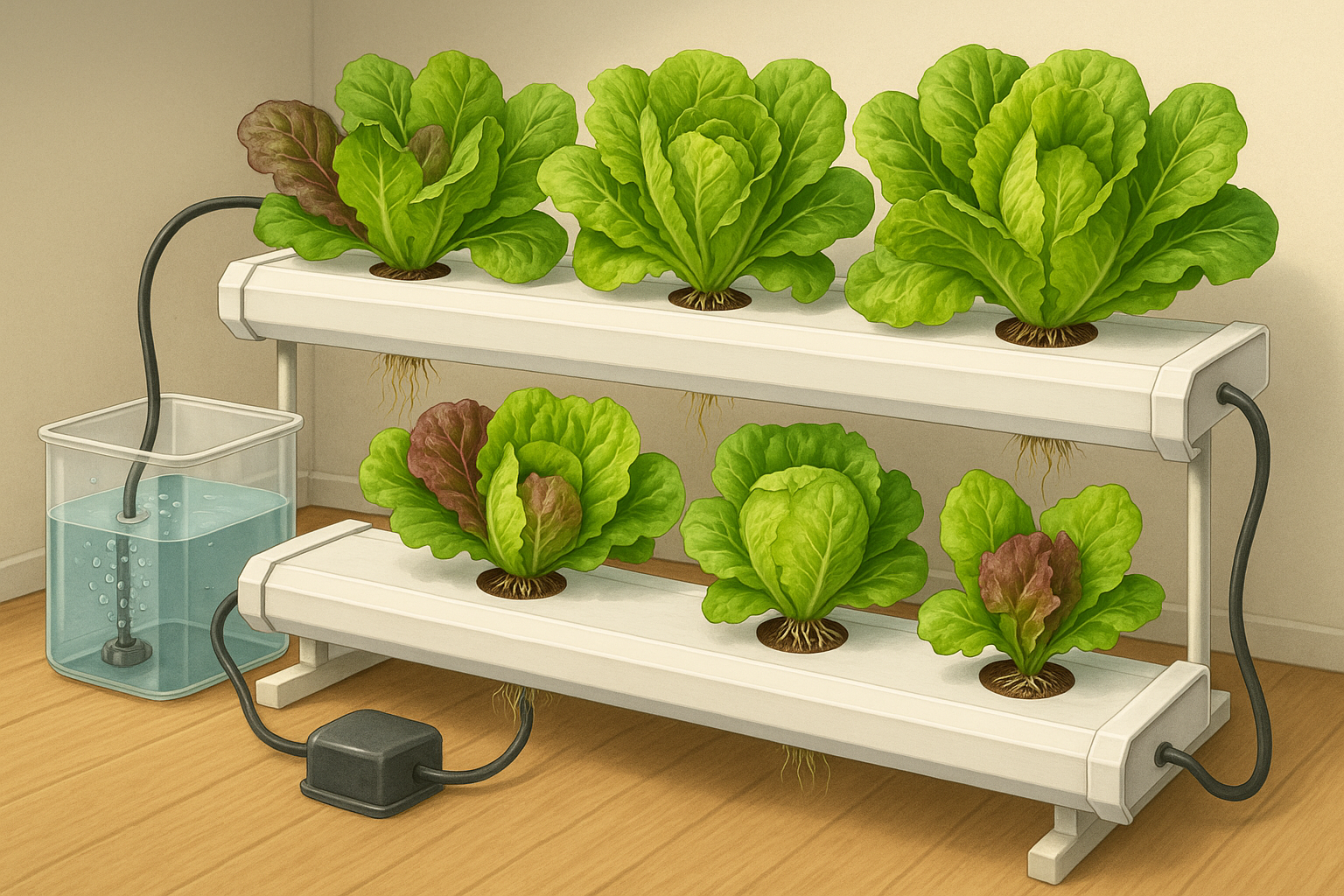
NFT, or Nutrient Film Technique, is a popular hydroponic method where a thin, continuously flowing film of nutrient-rich water runs over the roots of plants. This setup ensures the roots have easy access to nourishment while also being exposed to plenty of oxygen, promoting healthy growth.
Picture a series of slightly sloped channels—these are the growing channels—where each plant sits in a small hole. At one end, a reservoir holds the nutrient solution, which is gently pumped up and released at the higher end of the channels. The solution flows down the slope by gravity, creating a thin, continuous film that passes over the roots before draining back into the reservoir to be recycled.
Key components include:
- Growing channels
- Reservoir (which stores and mixes nutrients)
- Pump to move the solution
- Aeration stones or devices to keep the water oxygen-rich
Achieving the correct slope—usually between one and three percent—is crucial because it allows gravity to guide the solution smoothly and evenly, preventing pooling or dry spots.
For home growers, using sturdy PVC channels, food-safe tubing, and a small aquarium pump makes the system affordable and manageable at any scale. Remember to check regularly for root blockages, as roots can sometimes clog the channels and interrupt the flow.
This system’s efficiency comes from the perfect balance of nutrients and oxygen, making NFT a favorite for fast-growing greens like lettuce and herbs.
Best NFT System Setup for Lettuce
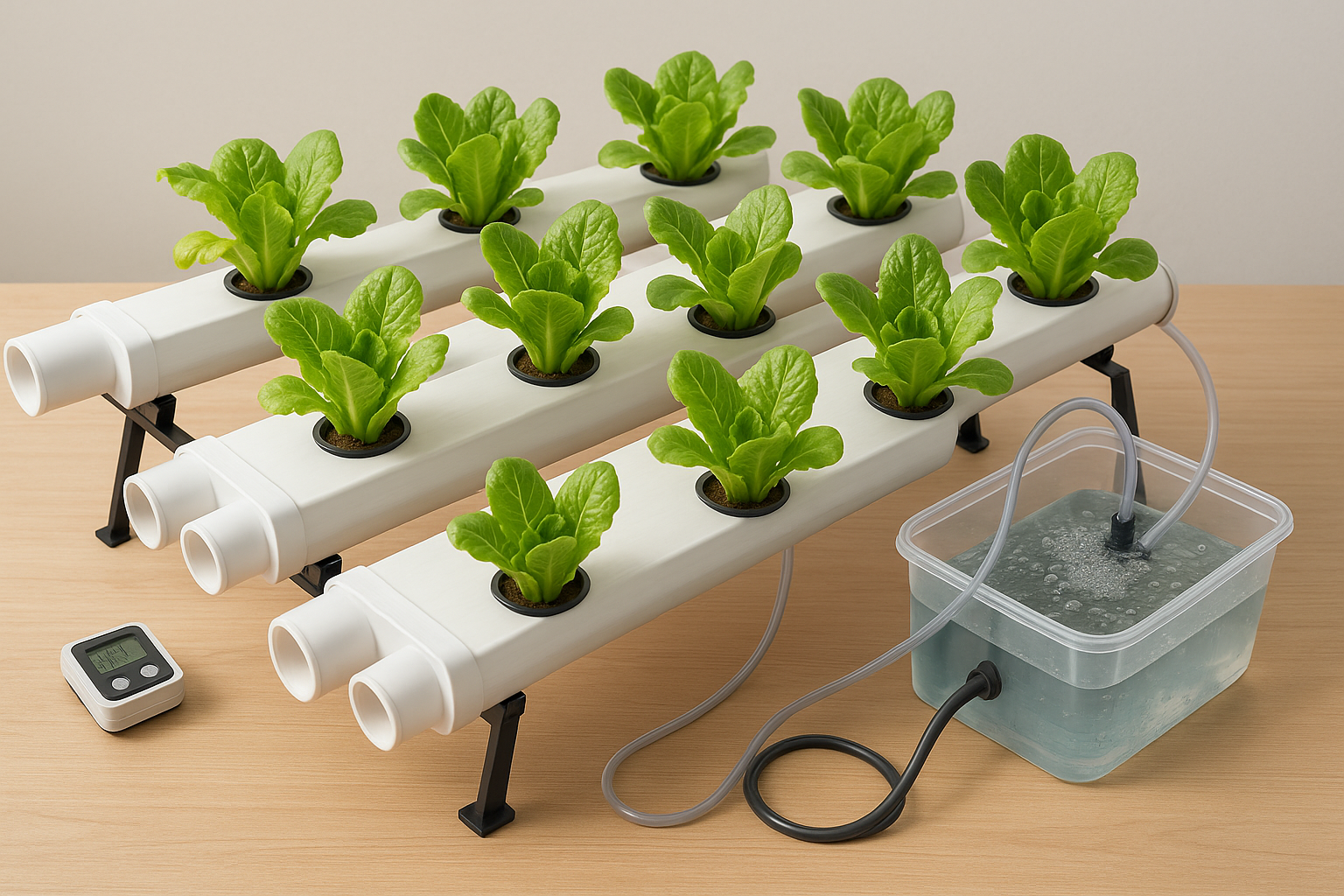
When designing an NFT (Nutrient Film Technique) system for lettuce, focus on creating conditions that encourage rapid, healthy growth while minimizing maintenance. Opt for food-grade PVC channels around 4 inches (100 mm) wide to allow plenty of room for growing roots and healthy airflow. Space the planting holes 6 to 8 inches (15–20 cm) apart to give each lettuce head enough space to develop fully.
Mount the channels with a gentle slope of 1–3% (about 1–3 cm drop per meter) to keep water flowing evenly without pooling. This reduces the risk of root rot and ensures all roots get nutrients.
For beginners and small-scale growers, consider complete NFT kits or DIY setups using PVC pipes, a small submersible water pump (rated for at least 200 L/h for a few channels), a basic timer, and a reservoir holding 20–40 liters of nutrient solution.
Use inert net pots and lightweight clay pellets or rockwool cubes for easy drainage and support. Lettuce thrives with 14–16 hours of full-spectrum LED grow lights if natural sunlight is limited and grows best in environments of 18–22°C with low humidity and good air movement.
To avoid root blockages, keep channels clear of fallen leaves and periodically check roots for overgrowth—prune gently if needed. Prevent stagnant water by ensuring your pump runs regularly and water returns smoothly to the reservoir.
Test your nutrient solution weekly to keep the pH in the ideal 5.8–6.2 range, and replace the solution every 2–3 weeks to maintain plant health.
With these tips and the right equipment, even beginners can enjoy crisp, homegrown lettuce year-round from an NFT setup tailored just for them.
Nutrient Solution & Water Management
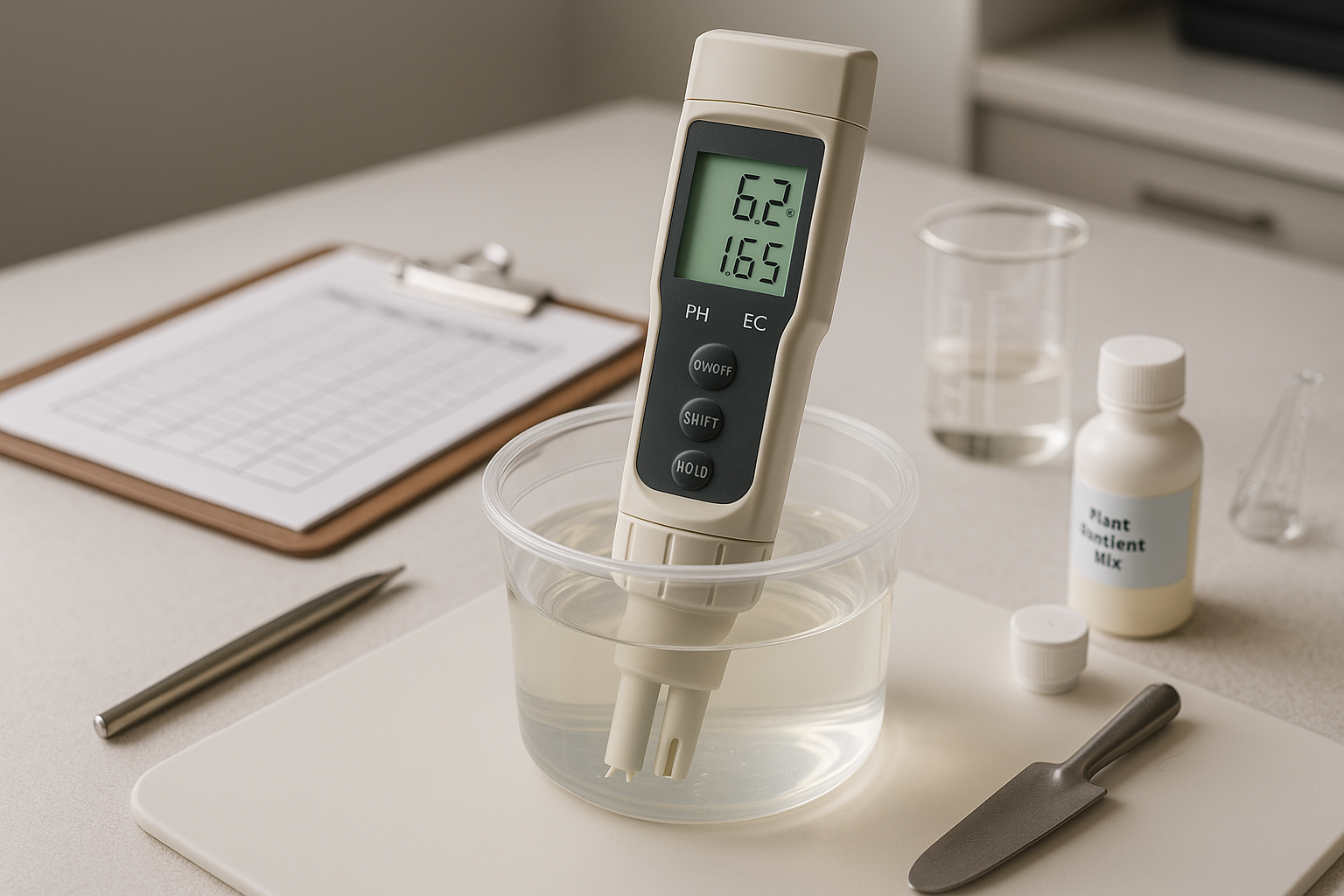
Lettuce thrives when given a well-balanced nutrient solution, typically requiring key macronutrients like nitrogen, phosphorus, and potassium, along with essential micronutrients such as calcium, magnesium, and iron. For hydroponic systems, start by dissolving a high-quality, lettuce-specific nutrient mix into clean, filtered water.
Monitor the electrical conductivity (EC) to ensure nutrient strength stays within the ideal range of 1.2 to 2.0 mS/cm for lettuce. This range allows roots to efficiently absorb nutrients without the risk of overfeeding. Check the solution’s pH daily; lettuce prefers slightly acidic conditions, ideally between 5.5 and 6.5.
Water temperature should be kept cool and stable, between 18°C and 22°C (64°F to 72°F), to promote healthy roots and minimize disease risk. Top off with fresh water regularly to maintain full reservoir levels, and completely replace the solution every two to three weeks to prevent salt buildup and nutrient imbalances.
Watch for clouded or foul-smelling water—signs of root rot—and keep roots well-aerated using air stones or regular stirring. Prevent nutrient imbalances by following the manufacturer’s directions and adjusting nutrient concentrations based on plant health and growth stage.
Yellowing leaves or stunted growth may signal issues; address these quickly by checking and correcting EC, pH, and solution temperature.
Pro Tips for Success
- Label and track your solution changes using a clipboard or app.
- Consistent monitoring goes a long way in keeping your lettuce healthy and productive.
Stages of Growing Lettuce in NFT
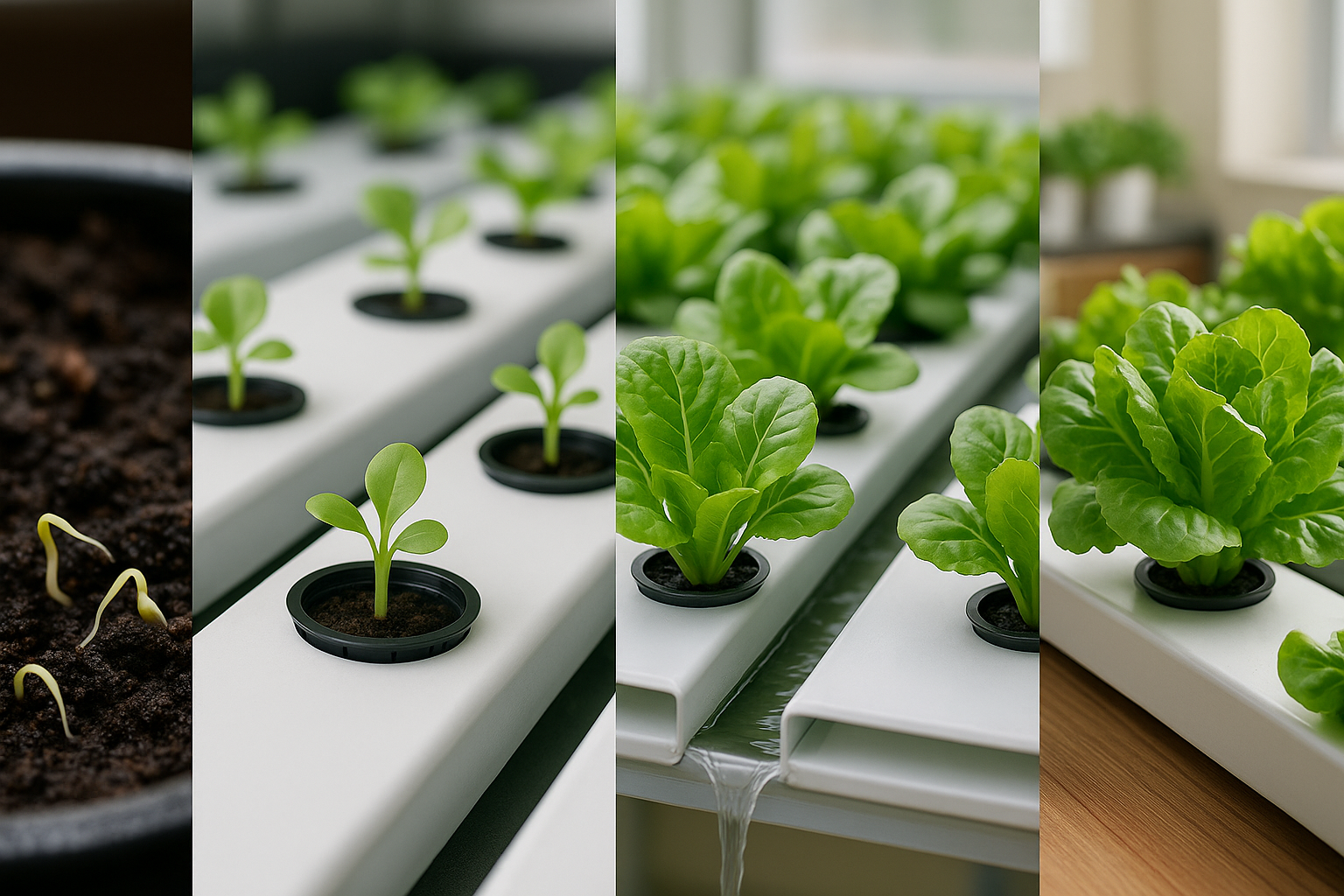
Growing lettuce in a Nutrient Film Technique (NFT) system involves several distinct stages, each requiring specific care. It begins with germinating seeds in a moist, dark environment until tiny roots and leaves appear—usually within 3-5 days.
Once seedlings develop their first true leaves (around 7-10 days), they’re ready to be transplanted into small net pots filled with a growing medium like rockwool or coco coir. These pots fit snugly into the NFT channel slots. During this stage, handle the seedlings gently to avoid damaging the roots and keep the roots moist—but not soaking—before connecting them to the nutrient flow.
From there, lettuce enters a rapid vegetative phase, thriving as a thin film of nutrient solution constantly bathes the roots. This steady supply supports visible growth over the next 3 to 4 weeks. Be sure to monitor and maintain the nutrient solution’s pH between 5.8 and 6.2, and regularly check root health—roots should be white, not brown or slimy.
Watch closely for signs of pests or disease, such as leaf spots or wilting, and address these issues promptly by adjusting airflow or cleaning the system. Lettuce is usually ready for harvest 30-45 days after transplanting, depending on the variety. Leaves should be well-formed, crisp, and just beginning to crowd their neighbors.
Resist the urge to wait too long to harvest; overgrown lettuce can taste bitter and bolt quickly in hydroponic systems. With regular observation and simple daily care, NFT-grown lettuce can go from seedling trays to fresh salad greens in just over a month.
Common Challenges and Troubleshooting
Maintaining a healthy NFT (Nutrient Film Technique) system for hydroponics means being ready to tackle a few common problems.
Clogged Channels
Clogged channels can stunt plant growth by stopping the flow of nutrients. Checking for debris weekly and flushing the system with water mixed with mild hydrogen peroxide can help prevent build-up.
Algae Growth
Algae isn’t just unsightly; it competes with plants for nutrients and oxygen. To keep it under control, block light from reaching the channels by using opaque covers and periodically wipe surfaces with a diluted vinegar solution.
Pump Failures
Pump failures are a major issue that can quickly dry out roots. Invest in a reliable pump and keep a spare on hand. Also, consider installing a simple water flow indicator to spot problems quickly.
Heat Stress
Heat stress, especially in summer, can raise water temperatures to levels harmful for roots. Use insulated piping, add a small aquarium chiller, or schedule watering during the cooler parts of the day to keep root temperatures stable.
Regular Maintenance
Regular routines like inspecting components weekly, cleaning filters, and checking pH and EC levels go a long way in preventing issues. Most importantly, create a checklist to track cleaning, monitoring, and nutrient solution changes. This organized approach helps catch problems early and ensures a consistently thriving system.
With a bit of vigilance and routine care, you’ll keep your NFT system running smoothly and your plants happy.
Conclusion & Next Steps
Nutrient Film Technique (NFT) offers many benefits for growing lettuce, including faster growth cycles, consistent yields, and reduced water usage. By delivering nutrients directly to the roots through a gently flowing film, NFT ensures plants get exactly what they need without the mess or unpredictability of soil. This results in cleaner, more efficient, and lower-maintenance lettuce production, even in small spaces.
If you’re new to hydroponics, start with a small NFT setup. This approach lets you troubleshoot and get comfortable before scaling up your operation. Don’t hesitate to experiment with different lettuce varieties or adjust nutrient mixes—each change is a valuable learning experience.
As you gain confidence, consider expanding your system or exploring advanced hydroponic techniques, such as integrating vertical setups or automated monitoring. For ongoing learning, check out online communities like Reddit’s r/hydro or dive into YouTube channels focused on hydroponics. You might also explore courses from organizations like Upstart University or local agricultural extensions.
With curiosity, patience, and the right resources, your NFT lettuce venture can grow from a simple hobby into a productive and rewarding garden solution—so dive in and see where it takes you!
